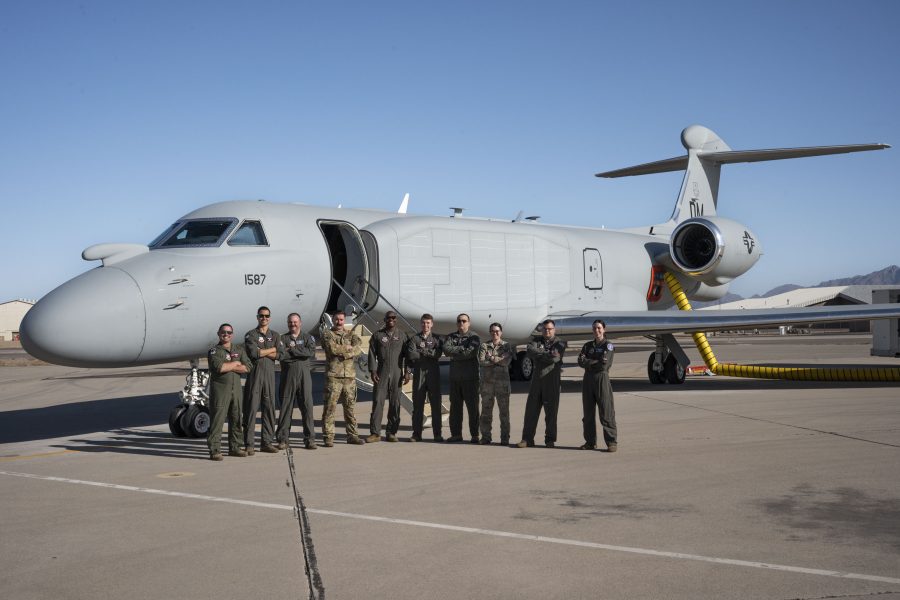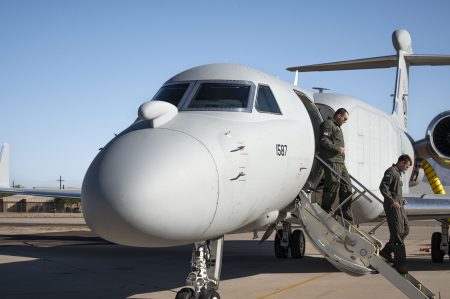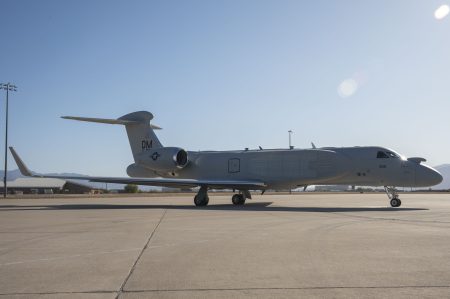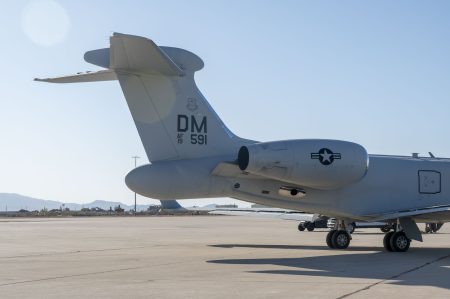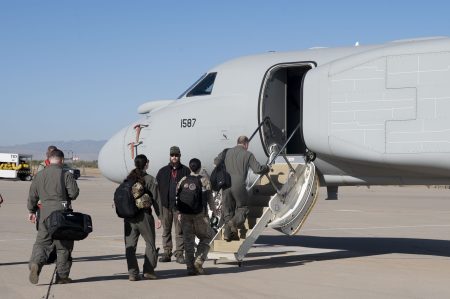The Air Force’s new electronic warfare jet has flown its first training mission, a critical milestone as the service modernizes its aging fleet of jammer aircraft.
An EA-37B Compass Call from Davis-Monthan Air Force Base, Ariz., took off for a training sortie May 2, crewed by Airmen from the 55th Electronic Combat Group.
The aircraft is a modified Gulfstream G550 business jet and is replacing the older, slower turboprop EC-130H, which is also nicknamed the Compass Call.
The two aircraft share much of the same BAE Systems and L3Harris equipment, but on the new EA-37B, the Air Force is getting a far more modern aircraft that can fly at much longer ranges and which will be upgraded further.
Because the mission was the first training sortie for EA-37 crews, the flight primarily served to familiarize the aircrew from the 43rd Electronic Combat Squadron with the aircraft and its systems. Airmen were able to review the basic tactics, techniques, and procedures needed to operate the aircraft effectively, a spokesperson for the 55th Wing, the parent unit that operates the EA-37B, told Air & Space Forces Magazine.
One of Davis-Monthan’s two EA-37Bs conducted the mission. The Air Force has said that it expects to receive five aircraft this year and plans to operate a fleet of 10 EA-37Bs by 2029, all of which will be headquartered at the Tucson base.
The EA-37B is designed to jam enemy radars, electronic systems, and communications. It will also help conduct suppression of enemy air defense (SEAD) missions by disrupting sensors and command-and-control batteries. The EA-37B can also fly at 40,000 feet and 600 knots compared to the EC-130H’s ceiling of 25,000 feet and 300 knots.
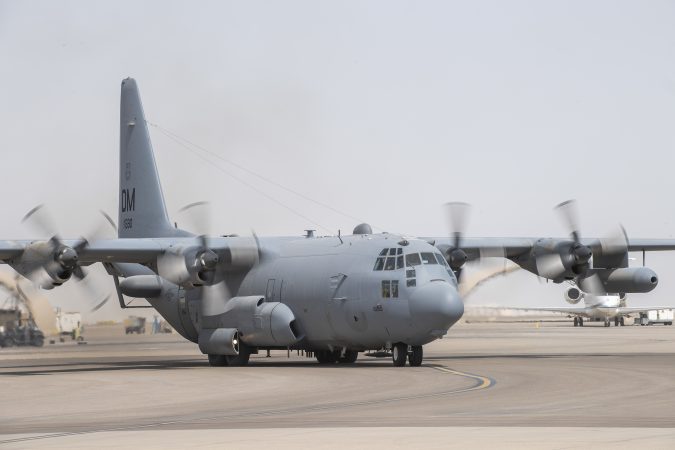
The EC-130Hs that are being replaced also posed substantial readiness challenges. Though the EA-37B was planned as a one-for-one replacement for EC-130H planes, only five older Compass Calls are currently operational, according to the latest data provided by the Air Force. At the end of fiscal 2023, the average age of the planes in the EC-130H fleet was roughly 50 years and they had a mission capable rate of just 33 percent.
“[W]e have adversaries that are developing long-range kill chain ecosystems and anti-access area denial capabilities,” 16th Air Force Commander Lt. Gen. Thomas Hensley said in a statement last summer when the first EA-37 arrived in Tucson. “The Compass Call will allow us to do things in the nonkinetic spectrum as well as in the electromagnetic spectrum to give us the advantage and not them.”
